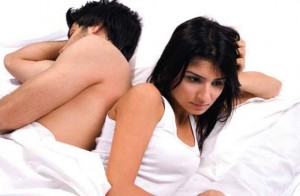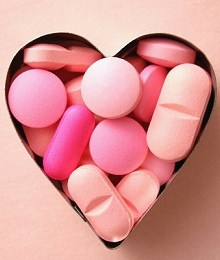Female Sexual Dysfunction: Patients’ Voices Heard

July 7, 2015 (FDA Office of Women’s Health) – The FDA has held a public meeting to hear perspectives from women with female sexual dysfunction (FSD) on their conditions and currently available therapies, and a report has just been produced. The FDA focused the meeting on the sexual interest and arousal symptoms which are associated with FSD.
FSD is a complex and multi-faceted disorder that has a wide spectrum of symptoms and severity. The term FSD covers a heterogeneous collection of conditions that have previously been classified into four different disorders:
- Hypoactive Sexual Desire Disorder (HSDD)
- Characterized by a reduced or absent interest in sexual activity.
- Female sexual Arousal Disorder (FSAD)
Characterized by an inability to attain or maintain sexalexcitement.
- Female Orgasmic Disorder
- Characterized by the difficulty to attain an orgasm despite sufficient arousal.
- Sexual Pain Disorder
- Characterized by pain during sexual intercourse.
Disorders of sexual interest and arousal are reported to be the most common forms of FSD and there are no FDA-approved therapies for treating these symptoms. The meeting was conducted to more systematically gather patient’s perspectives on their condition and available therapies to treat their condition.
As part of this commitment the FDA is holding at least 20 public meetings between Fiscal Years 2013-2017. Each will focus on a specific disease area. More information on this initiative can be found at http://www.fda.gov/ForIndustry/UserFees/PrescriptionDrugUserFee/ucm326192.htm.
Pharmaceutical treatments for FSD are limited. There are FDA-approved products for treating moderate to severe pain during sexual intercourse related to vulvar and vaginal atrophy associated with menopause; however there are no drugs approved by FDA to specifically treas FSIAD, HSDD, or FSAD. Other prescription products are used off-label by patients, including sildenafil, testosterone or estrogen, hormonal therapies and antidepressants.
These products, however have wither not demonstrated effectiveness for FSD or have potential safety issues if taken long-term. Non-drug therapies include lubricants, devices, behavioral or couples therapy and lifestyle modificiations.
This meeting gave GDA the opportunity to hear directly from patients and patient representatives about their experiences with female sexual dysfunction and its treatments. The discussion focused on two key topics:
- The effects of female sexual dysfunction that matter most to patients.
- Patients’ perspectives on treatments for female sexual dysfunction.
For each topic there is a panel of patients with FSD shared comments to begin the dialogue. Then panel comments were followed by a facilitated discussion inviting comments from other patients and patient representatives in the audience.
There were approximately 50 patients with FSD or patient representatives which attended the meeting in-person and around 30 patients or patient representatives provided input through the live webcast. In-person participants were reported to be an even distribution of age from below 30 to above 70. Whereas the majority of the web participants were less than 50 years of age.
Topic 1: The Effects of Female Sexual Dysfunction that Matter Most to Patients
The first discussion topic focused on patients’ experiences with their female sexual dysfunction symptoms and the resulting effects on their daily lives. FDA was particularly interested in hearing about participants’ symptoms relating to sexual interest and arousal, how these symptoms affect their sexual experiences, and how their symptoms have changed over time.
Four women with FSD provided comments to start the dialogue. Two panelists described beginning to experience interest and/or arousal symptoms within the past five years. The panelists described the challenges they face living with FSD, and the impact that their condition has on their ability to lead a fulfilling sexual life and maintain relationships. They also described the significant frustration, anxiety, and loss that they have experienced because of their condition.
There is an overall impact on relationships: Most participants discussed the strain that their partners and their relationships. A few participants described their partners’ reluctance to initiate contact, because of their perceived failure to stimulate sexual response, their fear of rejection, or their fear of causing their partner physical or emotional pain. A few participants stressed that the negative impact of their condition affects not just relationship with partners, but their relationships with family and friends.
Impact on self-esteem and identity: Participants said that their loss of sexual functioning left them with feelings of low self-esteem and inadequacy. Many noticed a drop in their levels of confidence as it related to their sexuality, attractiveness and femininity.
Emotional Impacts: Several participants described the devastation they felt after they failed to regain sexual function and were unable to perform in intimate situations with partners. One participant stated that she became so frustrated that any attempt to have sexual intercourse would end up with her crying. Other participants discussed the guilt that their difficulties caused them to feel.
Participants also linked the shame and stigma associated with their condition to the isolation they felt. They described being embarrassed and reluctant to talk about their issues.
Topic 2: Patient Perspectives on Treatments for Female Sexual Dysfunction
The second discussion topic focused on patients’ experiences with therapies used to treat FSD, with particular focus on therapies to address interest and arousal. According to the results of a polling question the majority of in-person participants reported taking prescription medication to treat their symptoms, followed closely by over-the-counter products. Dietary and lifestyle changes were also identified by participants as an important component of therapy.
Fewer web participants reported taking prescription medications, although many did report using over-the-counter products and undergoing lifestyle changes. A number of in-person and web participants reported they were not currently doing or taking anything to treat their symptoms.
Participants described in detail the benefits and downsides they have experienced from various therapies and modifications used to manage their condition.

Experimental or Off-label Prescription Therapies
Hormonal Therapy
Particularly testosterone, was discussed at length by several participants at the meeting. Participants described a range of effectiveness for testosterone products. Several described noticeable alleviation of symptoms, including an increase in desire, arousal, and ability to orgasm and described their excitement at discovering that they were interested in initiating sexual contact on their own. They were also experiencing side effects such as acne, unwanted hair growth, and nausea.
Some participants said that the costs of these treatments not covered by insurance prevented them from continuing treatment even though they had helped to improve their symptoms
Antidepressants
Most patient’s being prescribed antidepressants to address their interest and arousal symptoms stated that these medications did not relieve their sexual dysfunction symptoms, and only made it more difficult to orgasm. A few women expressed frustration about being prescribed antidepressants to treat their distress associated with FSD, without being treated for their underlying sexual dysfunction symptoms.
Other Drug Therapies
Two participants commented on their experiences with the investigational therapy flibanserin. One participant stated that she took the therapy as part of an open-label clinical trial extension. These participants described an improvement in sexual desire within a few weeks of use and described the benefits as having sexual feelings, initiating sex and enjoying intimacy once again.
Other drug therapies mentioned included muscle relaxants, pain killers, nerve injections, and Viagra (sildenafil). Participants did not report any positive impacts of these therapies on their symptoms.
Non-prescription or Non-drug Therapies
- Couples therapy: Participants discussed their experiences with couples therapy, in which they worked on their relationship with their partner in hopes of improving sexual difficulties. Some stressed the benefits they have seen in such therapy, believing that the root of their problems stemmed either from their relationship or from their partner’s approach to sex. As one participant explained, “accepting our sexual differences has been part of the whole change.” Some said that they did not have any success in resolving their symptoms with couples therapy.
- Behavioral therapies: Several participants described practicing behavioral techniques in varying ways during their sexual encounters. One participant described practicing mindfulness, making sure she stays in the moment during intimacy, and refocusing back if she is having difficulty responding. A few participants commented on changing their conceptualization of sexuality and incorporating positive sexuality and sensuality techniques to enhance their sexual experiences. A few participants commented on the benefit of visual or physical stimulation aids (e.g., erotica, devices) for some women. A webcast participant, however, commented on the challenge associated with some partners’ perceptions of failure if devices are used.
- Over-the-counter products: cited by participants included lubricants, use of supplements such as DHEA (dehydroepiandrosterone), Provestra, and male enhancement supplements. Participants generally commented that they did not notice any improvement of desire or arousal symptoms with the use of these products.
- Physical therapy: A few participants described trying manual pelvic floor physical therapy, massage, or acupuncture, without success.
Perspectives on an Ideal Treatment for Female Sexual Dysfunction
Throughout the meeting, participants provided their perspectives on what they would look for in a treatment that addresses their interest and arousal symptoms. Many participants stressed their desire to return to the quality of life they had before they began to experience FSD. For example, participants commented that they want “that part of my life back,” “the old me,” and “to be the woman my husband married not too long ago.” A few participants emphasized the importance of having intimacy in which both parties know, as one participant explained, that “it’s not duty sex but that I actually want him.”

Most participants stated that they would prefer to have a medication that consistently increases their interest and arousal. Several participants also commented on wanting to address their sexuality and self-identity more globally. For example, one participant commented that she wants to regain her identity as a woman, which extends beyond thinking about the next sexual event.
The FDA is appreciative of the patients and patient representatives who thoughtfully shared their experiences and perspectives on this sensitive topic, including the helplessness and frustration they experience as their conditions affect their relationships, their emotional well-being, and their overall quality of life.
Many participants expressed a strong desire for improvements to their existing treatments and for new treatments that better target the underlying cause of FSD. FDA is committed to supporting the development of safe and effective drug therapies for FSD.







